Summary
Offset the upward pull on your front foot by intentionally lowering it.
As you pop, the upward shift of your body’s center of gravity naturally pulls your front foot with it. Applying a diagonally downward force with the front foot counters this upward pull and enables the nose to travel horizontally forward. Meanwhile, the board’s center of gravity continues rising and lifts the tail, using the front foot as a pivot.
Avoid lowering your front foot excessively
Lower your front foot by approximately 10 cm from its peak height. The purpose is to prevent the nose from rising faster than the board’s center of gravity so that the tail can lift smoothly. In other words, there is no need to push your front foot down faster than necessary. As a result, your front foot may appear lower relative to your upper body, yet it never drops below its original absolute height.
Front foot goes DOWN = Back foot goes UP
The body functions as a single solid system. When one side moves, the opposite side naturally reacts to conserve rotational inertia. By lowering your front foot, your body receives a forward-rotating moment. Use this rotation to allow your back foot to rise naturally. If you try to lift it forcefully, it will lose meaningful contact with the tail.
Simulation
Analysis
The board continues rising even when the nose is held down
Although the front foot slows down the upward motion of the nose, the board’s center of gravity continues rising and consequently rotates the board around the nose. In effect, the manner in which the front foot regulates the nose directly determines whether the tail lifts efficiently.
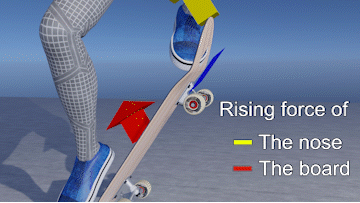
Common mistake: pushing the front foot only horizontally
When you pop, the upward momentum of your body pulls the front foot upward; combining this upward pull with a horizontal push results in the foot moving diagonally upward. To guide the nose in a controlled horizontal direction and help the tail rise, a downward-offsetting force must be applied.
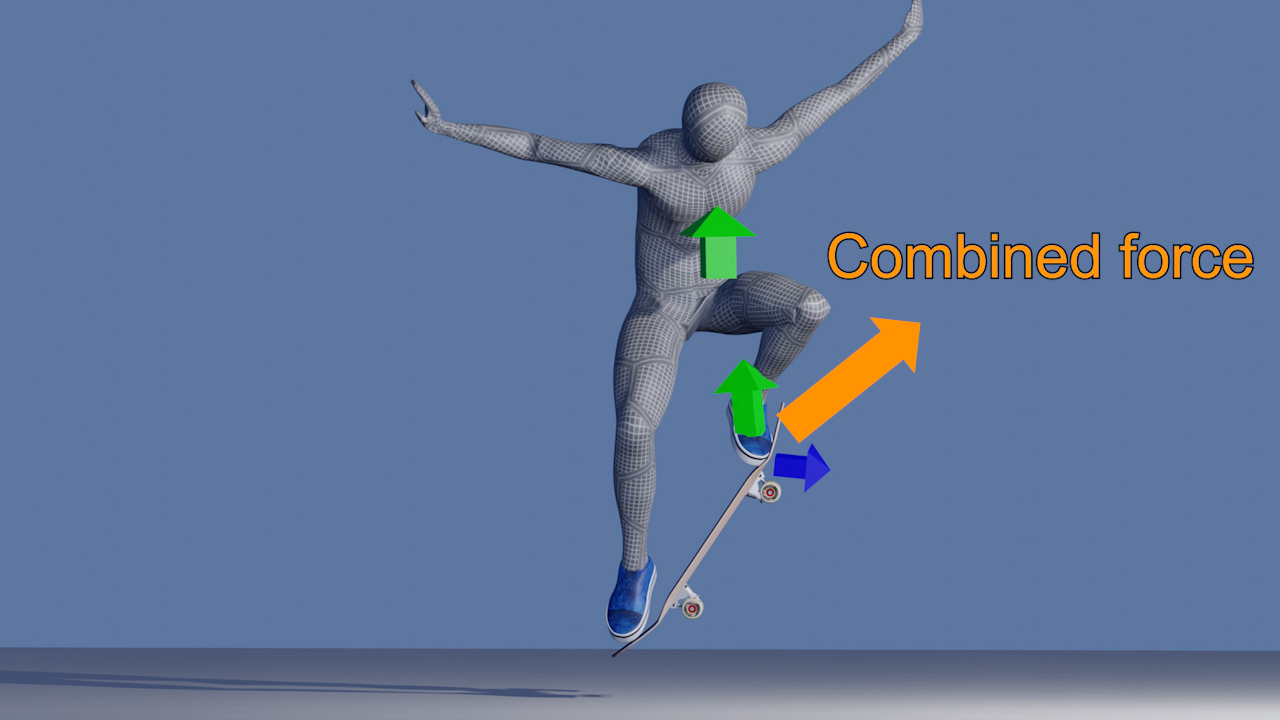
Precautions
Difference between pushing down and offsetting upward momentum
You just want to slow down the front foot's rising speed when the entire body is going up. And this does not mean "kicking the front foot down toward the ground."
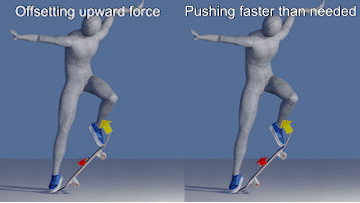
When you lower your front foot too much
If the front foot descends faster than what is required to counter the upward movement of your body, it pulls the board downward. This results in an Ollie where the front foot contacts the ground first, causing instability on landing.
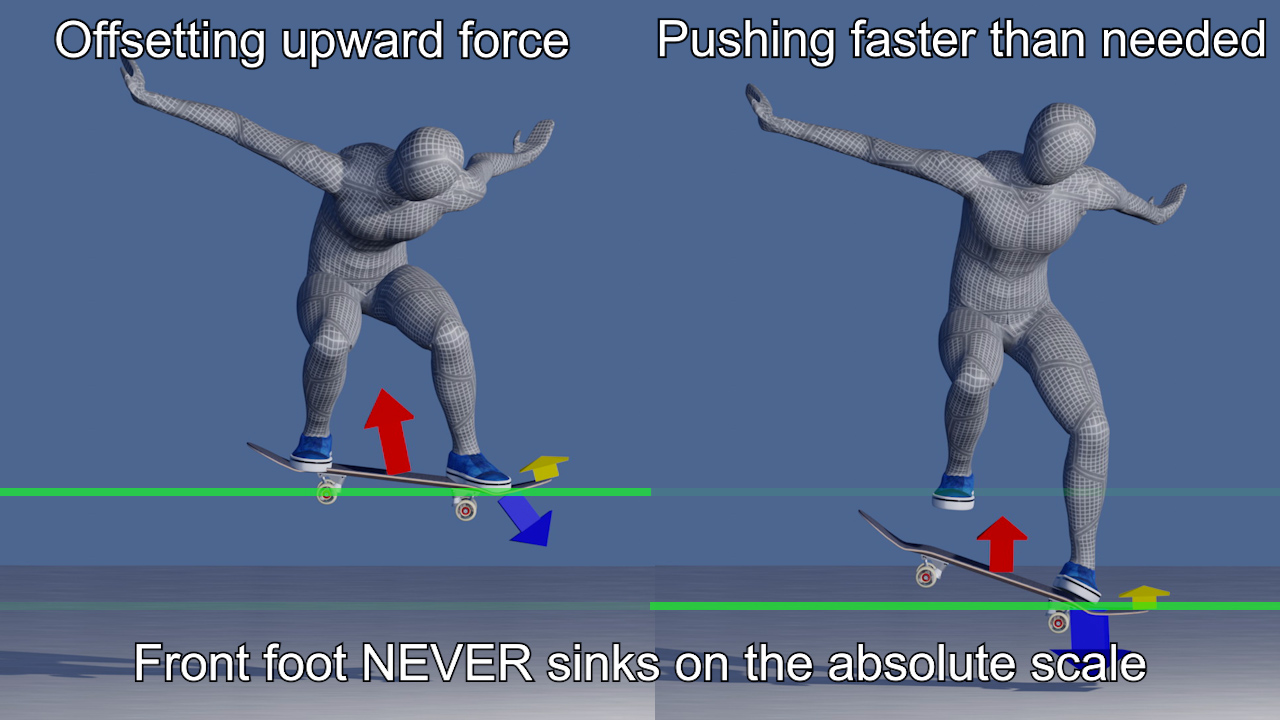
How much should you lower the nose?
The required amount depends on the strength of your pop, so it cannot be stated precisely. However, I generally aim to lower my front foot by approximately 10 cm from its peak height. Even a seemingly small distance such as 10 cm creates a noticeable difference between the rising speed of the nose and that of the board’s center of gravity.

Downsides of pushing the nose forward without counteracting the body's upward momentum
It is technically possible to level the board by pushing the nose forward, as doing so can slow the nose’s upward motion to some degree. However, this method is inefficient. When the upward force acting on your body is not properly counteracted, the difference in rising speed between the nose and the board’s center of gravity remains small. As a result, the board levels slowly. By the time it reaches a level position, it may already have dropped too low or drifted away from your center of gravity because the nose had to be pushed excessively far.

How to Lift the Back Foot
Utilize the force generated by the front foot
Once you have successfully guided the nose horizontally, you must bend your back knee so the tail can rise. When the front foot is lowered in midair, your entire body rotates toward the front-foot side. This same rotational force acts on the back foot, causing it to rise naturally and draw closer to your chest.

Avoid forcing the back foot upward
Attempting to lift the back foot by force breaks its contact with the tail, preventing the board from rotating upward as intended. It is more effective to allow the rotational force created by lowering the front foot to raise the back foot naturally.
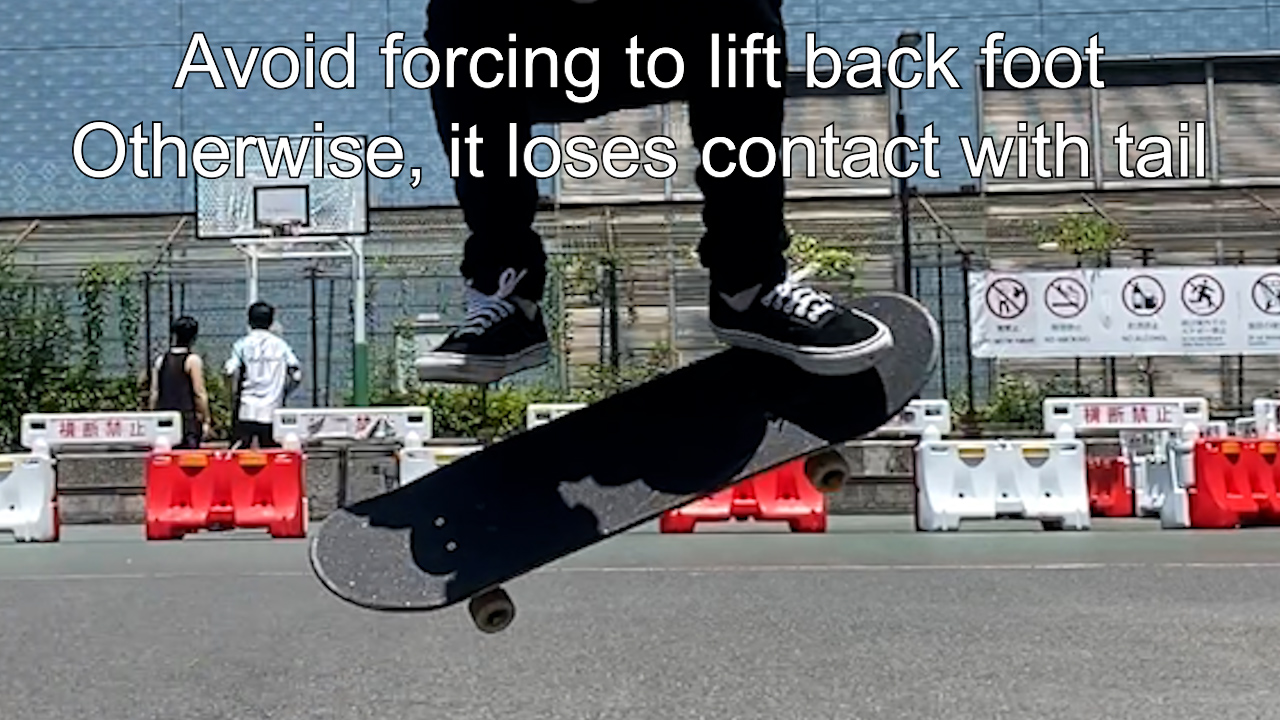

 Convert your video into 3D
Convert your video into 3D Facebook
Facebook Twitter
Twitter

